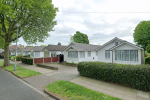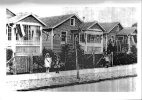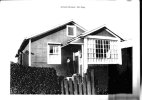jukebox
Engineer Brummie
I would be surprised if this hasn’t been mentioned before but I’ve done a search and couldn’t find anything. However if I’ve repeated previous posts I apologise!
I’ve just read a book (see below) which included detail of an area of Turves Green originally known as Longbridge Estate, later Austin Village, where in 1917 Herbert Austin, who urgently needed extra accommodation for workers at his rapidly expanding car factory, set up two hundred prefabricated weatherboard bungalows, reminiscent perhaps of New England, imported from Bay City, Michigan. These were situated in Coney Green Drive, Central Avenue and Hawkesley Drive. Many of these still exist.
Credits: Book – Bournville by Jonathan Coe. This book follows four generations of a fictitious family covering some of the most famous events of the last 75 years and is an insight into the social change in that time. Well worth a read.
Photo – Hawkesley Drive from Google street view.

I’ve just read a book (see below) which included detail of an area of Turves Green originally known as Longbridge Estate, later Austin Village, where in 1917 Herbert Austin, who urgently needed extra accommodation for workers at his rapidly expanding car factory, set up two hundred prefabricated weatherboard bungalows, reminiscent perhaps of New England, imported from Bay City, Michigan. These were situated in Coney Green Drive, Central Avenue and Hawkesley Drive. Many of these still exist.
Credits: Book – Bournville by Jonathan Coe. This book follows four generations of a fictitious family covering some of the most famous events of the last 75 years and is an insight into the social change in that time. Well worth a read.
Photo – Hawkesley Drive from Google street view.




